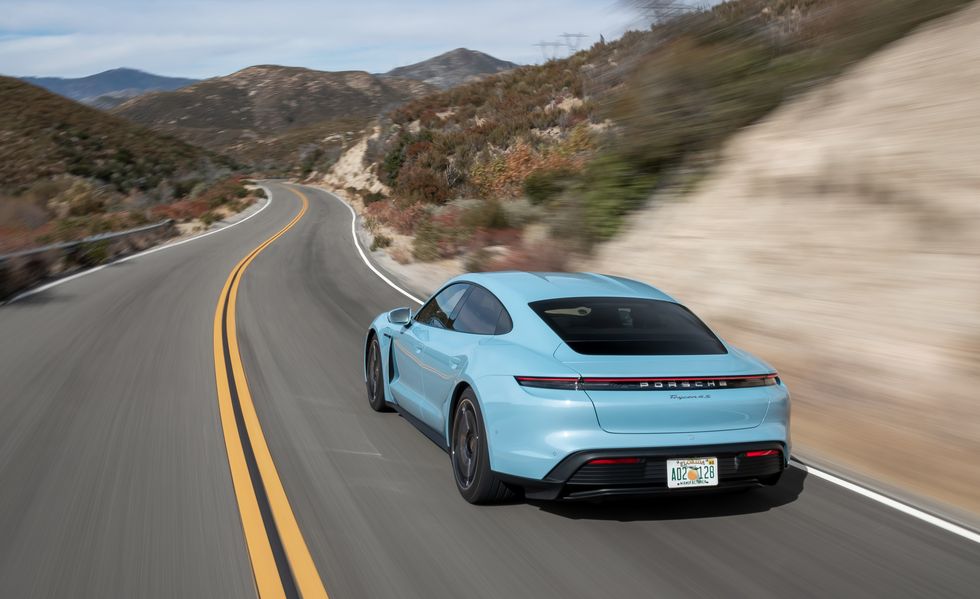Read The Full Article On: Govtech
More than 3,200 electric vehicles have been sold in Columbus, Ohio, in the last four years, capping a major goal of the Smart Columbus strategy. The milestone comes as car markets reel from the effects of the pandemic.
Electric vehicle advocates in Columbus, Ohio, recently passed a milestone in their efforts to increase the adoption of the vechicles in the Midwest region.
The effort to grow EV ownership to some 3,200 vehicles — a roughly 500 percent increase — was a centerpiece of the larger Smart Columbus strategy, an overhaul of transportation priorities in the region geared toward a more sustainable and equitable options.
“We’re very excited about this milestone,” said Jordan Davis, director of the Smart Columbus program with the Columbus Partnership.
In the four years since the city was awarded its $50 million Challenge Grant by the U.S. Department of Transportation, Smart Columbus has hosted dozens of events to introduce EVs to motorists, led efforts to install nearly 1,000 public EV charging points and changed the way the region thinks about transportation.
“We had a whole regional strategy looking at where charging should go, both for multi-unit dwellings, residential … workplace charging and we absolutely increased the presence of that, holistically, in all of those dimensions,” said Davis, as she extended credit to the significant level of local support and leadership in favor of growing electrification across the transportation sector.
Some 3,320 EVs have been sold to consumers in Columbus since 2016. At that time, EVs made up only 0.4 percent of the market in the Columbus region. That increase has been aided by the rapid developments in EV technology among carmakers as they have introduced more models across more price points and with longer ranges.
Columbus gauged consumer interest in EVs at the beginning of the grant period, and then again at the end, Davis explained.
“And we did see a significant shift in the willingness of residents here to consider buying an EV,” she said.
That shift is a testament to the multi-sided approach to growing consumer interest and intrigue around EVs that included hands-on events like ride-and-drive events and expanding charging infrastructure, but also engaging directly with large employers to educate workers about the benefits of vehicle electrification.
“The real consumer sentiment has dramatically shifted. And there’s a lot of sustainability in that for the long term,” she added. Smart Columbus officials speculate “consumer likelihood to purchase an EV” has grown by more than 20 percent in the region.
To communicate these successes, Smart Columbus released its new AccelerateYourCity site which includes details on the many initiative taken in the last four years to transform transportation in the region and grow the adoption of EVs. The aim is to have the portal serve as a “playbook” to help other cities, organizations and academic institutions in the research and development of adoption strategies.
To be clear, new milestones was not without unforeseen challenges. In the last two months the COVID-19 crisis and pandemic has altered not only Ohioans’ drive and commute habits, but nearly zeroed out the purchase of new cars as the economic crisis continues to cut more deeply. The Columbus Experience Center, a showroom of sorts where residents can learn about and even test-drive EVs, has been closed for the “foreseeable future,” said Davis.
“It’s such a time of uncertainty. We’re trying to make the best decisions, to conserve resources, that impact the community in the best ways that we can,” she added.
Industry watchers say car sales could decline about 40 percent as the nation settles into a recession. The virus pandemic also shuttered the majority of car manufacturing plants, however, that activity is beginning to come back online as the country reopens.
“To get the industry back on its feet, you need supply and demand. And supply is ramping back up,” said John Voelcker, a journalist and analyst covering advanced auto technologies and policies around them, during a recent webinar hosted by Forth, an EV advocacy group. “China is pretty much back in business now. Europe and the U.S. are on roughly similar schedules.”
“If we don’t have further outbreaks, and if everything goes well, by let’s say, Labor Day, you could have the bulk of the global industry back in a position to produce most of what it produced in January,” he said, adding that demand is the “big question.”
Columbus officials say strategies going forward could take an added emphasis in growing the purchase of used EVs, which is becoming a wider market now that the cars have been in circulation, many for the last five years.
“Used EVs are a great deal. There’s a lot of reasonably priced used EVs out there, that are only a couple of years old, and still basically have 100 percent of their battery capacity, and they’re really cheap,” said Joel Levin, executive director of Plug In America, an EV education and advocacy group, in comments during the Forth webinar, calling used electric cars “kind of the big secret in the EV market.”
Even with many of its successful programs like the ride-and-drive events sidelined for now, Columbus will weave expanded electric vehicle adoption into its future, Davis said.
“As we’re thinking about the aspirations for what does recovery mean our community, I think that electrification still very much has a place in that conversation,” she said. “Smart Columbus, more generally, still has an important role to play in setting a vision for the future.”

